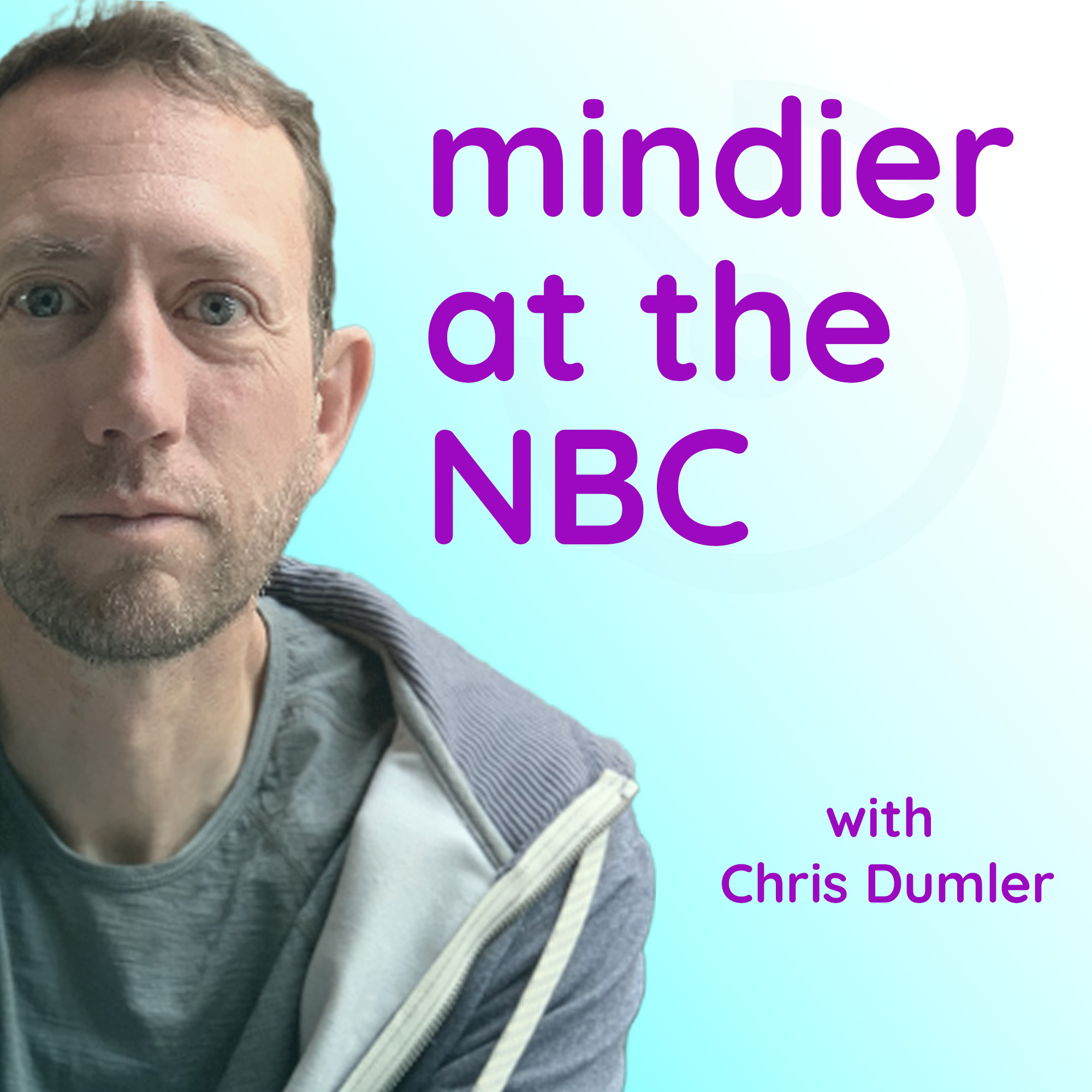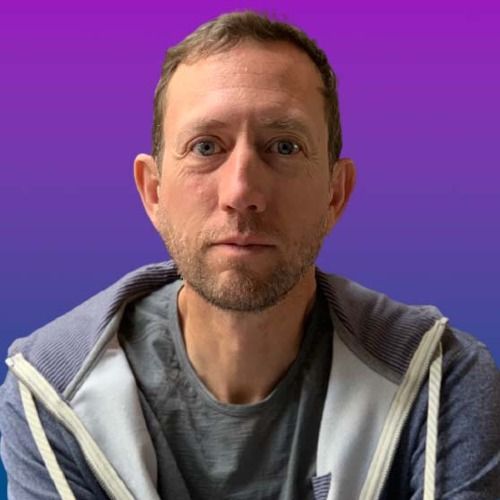Guided Meditation: See Hear Feel
The See Hear Feel technique (also known as Note Everything): In this technique we explore allowing the attention to freely float between sensory experiences, noting and labeling each one, without restriction or traditional focus object.
Guided meditation for students of the mindfulness training at the Nelson Buddhist Centre in early 2022.
Transcript
In many mindfulness meditation practices, there is a object
Speaker:of focus and a distraction.
Speaker:So you focus on an object such as the breath.
Speaker:You pay attention to that until you realize that you're.
Speaker:not paying attention to it.
Speaker:You've essentially been distracted.
Speaker:And then you return your attention to the focus, object, the breath,
Speaker:and you go back and forth between focus, object, and distraction
Speaker:until the meditation is done today.
Speaker:We're gonna do something a little bit differently.
Speaker:We're going to get rid of the idea of the distraction here, and we're going to allow
Speaker:our attention to freely float between.
Speaker:Any sensory experience.
Speaker:So anything you see, anything you hear or anything you feel is all the
Speaker:focus object, and you can let your attention just naturally go from object
Speaker:to object, to object continuously.
Speaker:So it may sound a little different, but let's give it a try.
Speaker:If you are in a seated position, go ahead and lengthen the spine.
Speaker:You can relax your shoulders, your arms.
Speaker:If you are in an alternative position, you wanna position yourself so that
Speaker:you are both relaxed, but also alert.
Speaker:You wanna make the most of the practice and being alert is
Speaker:a part of being productive.
Speaker:Your eyes can be open for this, or they can be closed up to you, but allow
Speaker:your attention to freely float between anything in your sensory experience.
Speaker:So you might notice
Speaker:something visual.
Speaker:Like the wall or the floor or something outside or the back of your eyelids,
Speaker:you would acknowledge that or note it, and then you can apply a label.
Speaker:In this case, something visual would be labeled C and then you
Speaker:might let your attention go to the next thing that grabs it.
Speaker:Maybe it's mental talk.
Speaker:You hear dialogue.
Speaker:So you let your attention go to the area where you detect the mental talk.
Speaker:You acknowledge it, apply a label label for mental talk is here and
Speaker:then move on to the next object might be something that you feel like.
Speaker:Your heartbeat, a sensation like curiosity,
Speaker:you acknowledge wherever you feel a
Speaker:sensation, apply the label feel, and then move on.
Speaker:Any pattern is fine.
Speaker:It's just letting your attention go.
Speaker:To whatever it's drawn towards.
Speaker:Try that.
Speaker:This technique you have the option to use spoken or mental labels.
Speaker:and there are only three labels in this technique, in
Speaker:the, see here, feel technique.
Speaker:Other labels exist differently in different techniques, but
Speaker:in this technique, it's just see just here or just feel.
Speaker:And so if I demonstrate how that sounds, I see something visually,
Speaker:maybe it's just the back of my eyelids.
Speaker:If my eyes are closed.
Speaker:I label that C
Speaker:I feel something, maybe it's muscles, my hands in my lap label that feel,
Speaker:I hear something like a sound from outside or in the environment.
Speaker:I label that here.
Speaker:So it sounds like this in practice.
Speaker:Feel here, here,
Speaker:see, feel
Speaker:on and on just a neutral tone and a nice even pace.
Speaker:Matter of fact, whatever it is that comes into your experience,
Speaker:your tone, uh, should stay neutral and your pacing, maybe a little
Speaker:faster, a little slower than mine.
Speaker:It's your own personal style.
Speaker:So just experiment with it.
Speaker:Try that for a bit.
Speaker:You might find yourself pulled to two or more sensations at the same time.
Speaker:For example, you're seeing something, but then you also hear something.
Speaker:Uh, additionally that's okay.
Speaker:Just pick one to acknowledge and label and let the other go.
Speaker:And then you can move on.
Speaker:It won't matter, which just you're choosing one, just to keep
Speaker:it simple and then to move on.
Speaker:Also anything that's restful is included in the labeling, see here and feel.
Speaker:So if you experience relaxation in the body, for example, you would label that
Speaker:feel, you might experience a quiet room.
Speaker:You would label that here.
Speaker:You might experience the restlessness that comes with a defocused
Speaker:gaze or the stillness that you sense behind your closed eyes.
Speaker:That's labeled C.
Speaker:Sometimes you might notice something vanish as soon as you acknowledge it.
Speaker:So a sound that was there and then suddenly isn't there.
Speaker:You might note it and label it.
Speaker:But the vanishing itself leaves maybe a stillness or something in its wake.
Speaker:And you could enjoy that and note and label that if it's restful,
Speaker:it would be a, uh, label applied to the specific sense category.
Speaker:See here or fuel.
Speaker:Most of us are juggling a lot of experiences at any given time.
Speaker:, there are a lot of sites sounds, emotional body sensations, physical
Speaker:sensations, restful states that occurring in our experience throughout the day.
Speaker:Being able to process these in a more conscious way is what a
Speaker:technique like this helps us train.
Speaker:For, for example, if you're an athlete, there's a lot of sensation happening.
Speaker:You've.
Speaker:The activity of your sport, any self doubt, fear, excitement.
Speaker:You've got fatigue, pain as well as sounds of crowds or spectators
Speaker:or opponents, but , but also if you are just in a presentation or you're
Speaker:communicating with somebody, you have.
Speaker:interaction where you are collecting verbal signals, audio
Speaker:cues, emotional sensations, or responses to whatever's occurring.
Speaker:So all of these sensations happening at any given time, being able to
Speaker:really acknowledge them and proceed in a way that is skillful can be very
Speaker:beneficial to any of our experiences.
Speaker:Just continuing, noting and labeling as you move about from each sensory
Speaker:experience to another sensory experience, that little landing and
Speaker:acknowledgement and labeling.
Speaker:before moving on to the next sensory experience, that's a concentration
Speaker:skill buildings, uh, exercise.
Speaker:And as you're
Speaker:totally open to what's happening in your experience.
Speaker:Pleasant images, the unpleasant sounds the confusion or emotional body
Speaker:sensations, anything in the experience.
Speaker:We're just opening up to all of it, welcoming allowing all of the experience
Speaker:to come and go without this need to push anything or clinging to anything.
Speaker:This is building this equanimity skill.
Speaker:It's a kind of balance, a coolness.
Speaker:Keeping your cool under pressure, as we say, in sports
Speaker:and recognizing the difference between something
Speaker:something that you see visually or hear.
Speaker:Or feel something that's active, something that's restful detecting the differences.
Speaker:Internal, external, these differences are all a part of building sensory clarity.
Speaker:When all of these skills are working together, we're really being mindful.
Speaker:This is where we're.
Speaker:Learning to appreciate every experience completely.
Speaker:We've got everything wrapped in we're completely experiencing
Speaker:life, and this is true mindfulness.
Speaker:So if you're finding some
Speaker:positive effect here, some positive benefit.
Speaker:Something interesting curiosity.
Speaker:See if you can carry that into the rest of the day,
Speaker:if you noticed confusion, agitation in patience.
Speaker:See if you can greet that with some acceptance and carry that
Speaker:into the rest of your day.
Speaker:if you're following the instructions and
Speaker:staying as productive as you can, you're doing good work, really
Speaker:good work, and it gets easier.
Speaker:The more practice, and the more time you spend with it,
Speaker:I hope this practice meets you well, and I look forward to.
Speaker:Training with you.

